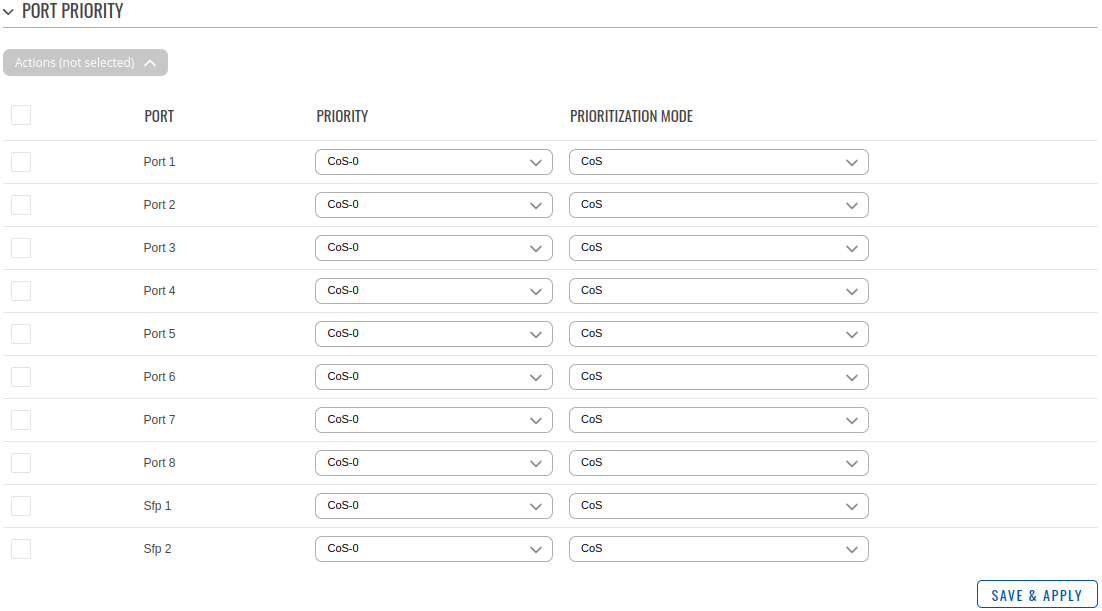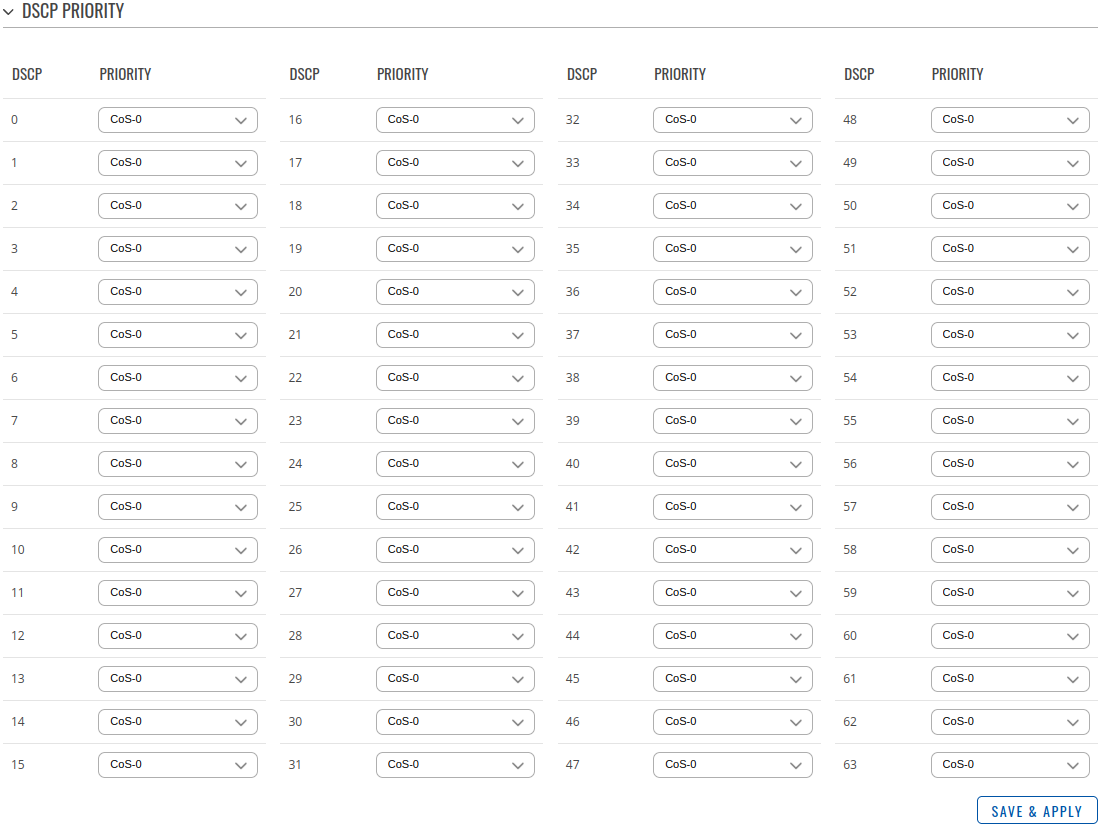Template:Networking tswos manual qos
Appearance
Template:Networking rutos manual fw disclosure
Summary
Quality of Service (QoS) is used to set up priority to specific devices, services or applications within the network through the router, so that the maximum amount of available throughput and speed can be used.
Port priority
| Field | Value | Description |
|---|---|---|
| Port | Physical device port | Port ID. |
| Priority | CoS-[0..7]; default: CoS-0 | Port-based priority of the specified port. |
| Prioritization mode | CoS | DSCP | Equal; default: CoS | Utilizes either CoS, DSCP or both markings equally. CoS operates at Layer 2 of the OSI model and consists of eight different classification groups to which Ethernet frames can belong. DSCP serves a similar purpose as CoS, but it does so at the network layer -- Layer 3 -- of the OSI model and uses a 6-bit field, as opposed to only 3 bits. |
DSCP priority
Differentiated Services Code Point (DSCP) is a means of classifying and managing network traffic and of providing quality of service (QoS) in modern Layer 3 IP networks. It uses the 6-bit Differentiated Services (DS) field in the IP header for the purpose of packet classification.
802.1p priority
Bandwidth control
Rate limit
Storm control
| Field | Value | Description |
|---|---|---|
| ; default: 1 |
[[Category:{{{name}}} Network section]]


